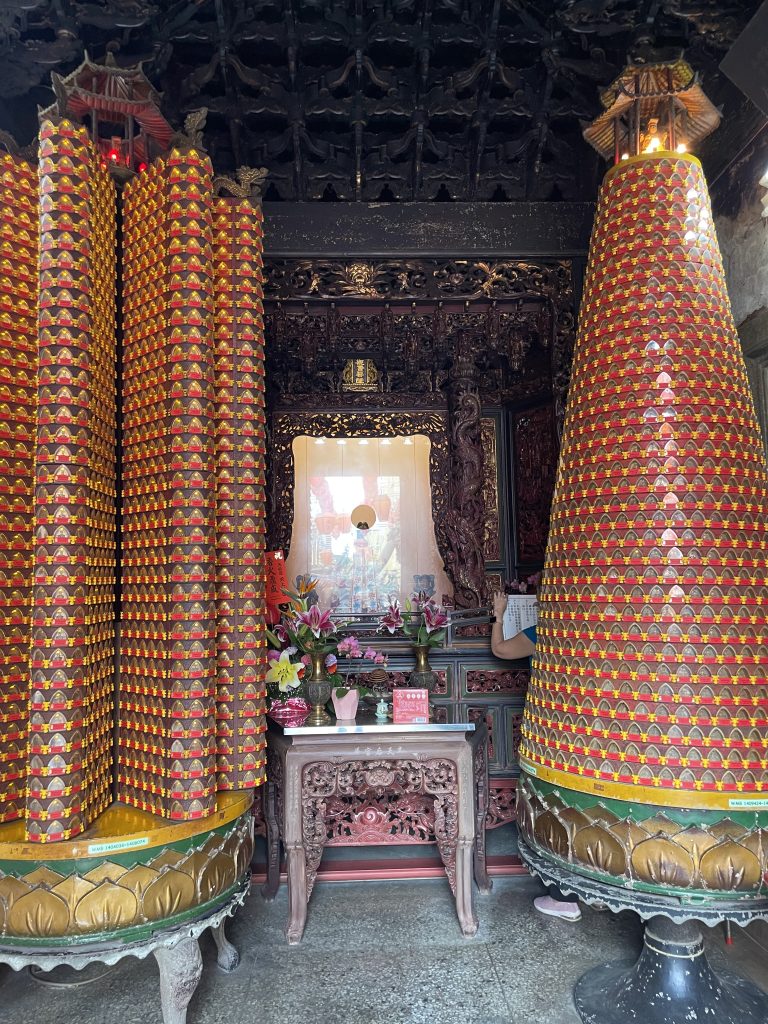Today is another day of reflection. This time, we’re taking an insightful look into the religion of Buddhism. Alongside that, we also examined the relationship between a doctrine, a place of worship, whether that be a temple, church, religious space, etc., and its connection to the business aspect, if one exists. Within these connections, we explored whether any conflicts may arise between the spiritual and the material.
During this time, our Professor Chen spoke about the symbiotic ecosystem between temples and their seamless integration into the surrounding community. It’s not unusual to see temples along a regular street. In fact, they’re so well-integrated that they don’t stand out, they give off a sense of normalcy, especially for the local community and even for those visiting from other provinces. It’s just part of everyday life here.
We then discussed the differences within doctrines and the potential conflicts that emerge when material or business aspects enter into religious spaces. A fellow peer shared something particularly interesting, many temples feature tall pillars with small windows, and within those windows are names, birthdates, and small figurines. These represent donors who have contributed financially to the temple. It’s both a symbol of their support and, in a spiritual sense, a way to gain good karma.

This practice, one could argue, conflicts with the ideals of purity and spiritual equality that temples are meant to represent. For worshippers who don’t have the resources to make such donations, it can create a sense of exclusion or inadequacy. It raises the question, if I can’t donate, am I also unable to gain good karma from the temple or the gods I worship? This tension highlights the conflicting ideals that can exist within a doctrine and the business dynamics that sometimes accompany the spaces where that doctrine is practiced.
On that note, our exploration of Buddhism invited us to look not just at religion, but at the world itself, and how we experience it. Buddhism teaches that the world we live in is shaped by us, by the actions we undertake as humans. One of the key concepts is samsara, a continuous cycle with no beginning, and an end that leads to nirvana. Within samsara are five realms or stages, and one that stood out to me was hell. It’s a stage we’ve all possibly experienced in past lives, and may pass through again, even in this one.
With that came a profound insight shared by Professor Young, we are the cause of our own suffering, our own happiness, of everything we experience. It’s not the gods who bring us pain or joy. It’s us, through our actions and choices.
That idea led me to another reflection, on suffering itself. Often, when we hear “there is suffering in the world,” we may resist the idea, especially if we personally are not suffering. That’s because we tend to see “the world” as just the version of it we ourselves live in. If our world is comfortable, we might overlook or minimize suffering elsewhere.
It’s a reminder that everyone is the protagonist in their own story, in their own version of the world. Because of that, we’re all protagonists in the broader world too, no one experience is the same, and no one life is more valid than another.
With all this being said, these are just some of the insights I’ve reflected on and heard during this time of learning and reflection. As always, it was nice sharing my thoughts during these moments with you, and I’ll talk to you later. Bye!